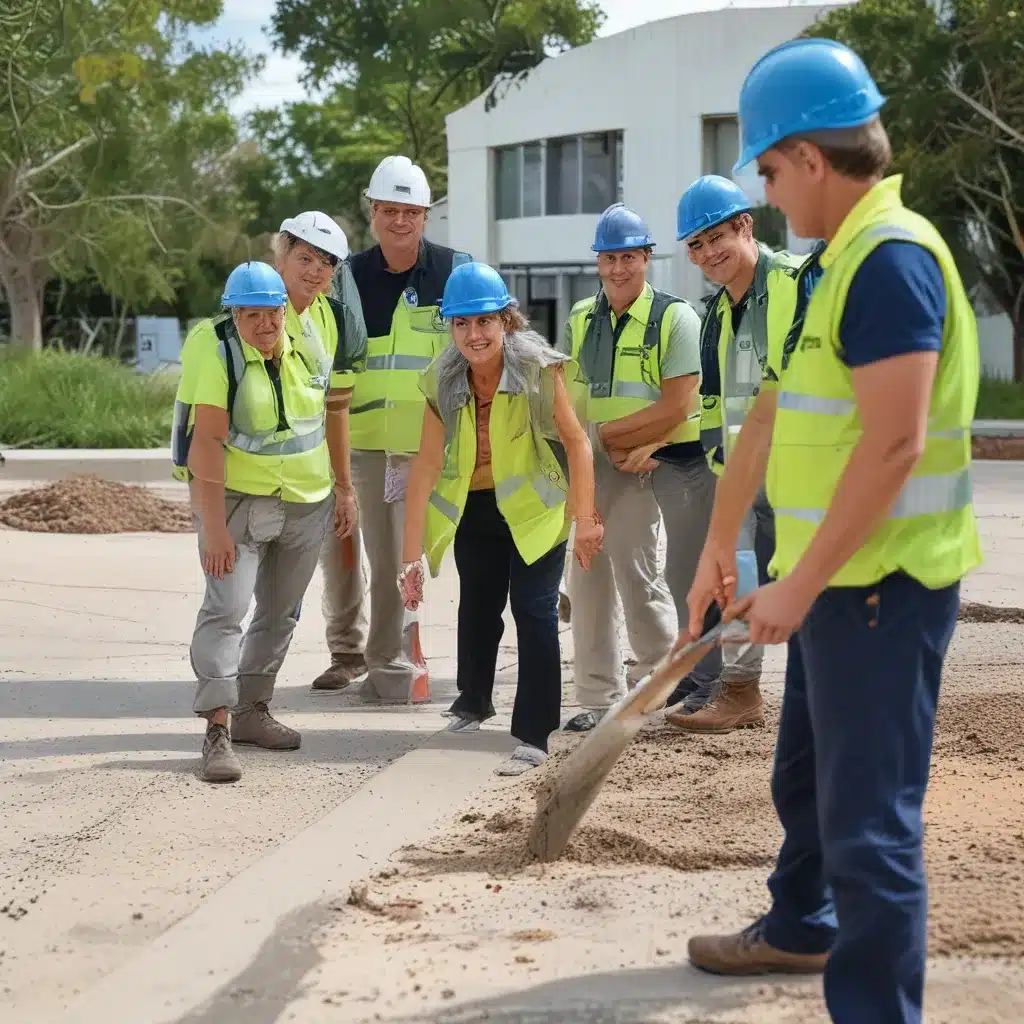
Crumbling Concrete and Crumbling Dreams
As I strolled through the bustling streets of Townsville, I couldn’t help but notice the cracks and crumbles in the concrete beneath my feet. It was a stark reminder of the challenges our community faces in maintaining the backbone of our infrastructure. But what if I told you there was a way to not only fortify our concrete, but also make it more sustainable and environmentally-friendly?
You see, I’ve been on a mission to uncover the latest innovations in concrete technology, and let me tell you, the future is looking bright – or should I say, green. Through my research, I’ve discovered a world of self-healing, pollution-fighting, and even energy-generating concrete that could be the key to unlocking a more sustainable future for Townsville.
Stopping Cracks Before They Start
One of the most promising developments in concrete technology is the advent of self-sensing concrete. Developed by researchers at the University of New South Wales, this innovative material is embedded with conductive sensors that can detect microscopic cracks before they have a chance to worsen.
“It’s far better to act early on cracks in structures,” explains Associate Professor Wengui Li, the leading researcher behind this technology. “Leaving it too late can lead to demolishing.” And as we all know, demolishing crumbling infrastructure can be a costly and disruptive process for any community.
But with self-sensing concrete, we can catch those pesky cracks in their tracks. The sensors embedded within the material can send real-time alerts to engineers, allowing them to address the issue before it spirals out of control. It’s like having a crystal ball for your concrete, giving us the power to prevent catastrophic failures like the 2018 Opal Tower incident.
Concrete That Heals Itself
But the innovation doesn’t stop there. Li’s team has also developed a game-changing self-healing concrete that can mend hairline cracks after exposure to moisture. “If we can solve this problem,” Li says, “we can improve the durability and extend the service life of the concrete to more than 100 years.”
Just imagine – a world where our roads, bridges, and buildings could last over a century without the need for constant repairs and costly maintenance. It’s a dream come true for any city looking to future-proof its infrastructure.
And the best part? This self-healing concrete isn’t just a pipe dream. Li and his team have already successfully incorporated a crystalline mixture into the material, paving the way for a more sustainable and resilient built environment. It’s like having a superhero for your concrete, ready to leap into action whenever trouble arises.
Concrete That Cleans the Air
But the innovations in sustainable concrete don’t stop there. Researchers have also developed photocatalytic concrete that uses titanium dioxide and light exposure to break down air pollutants from vehicle exhaust into harmless salts.
Just think about it – our streets, sidewalks, and even building facades could be actively working to purify the air we breathe. It’s like having a team of invisible janitors, tidying up the environment one molecule at a time.
And the potential doesn’t end there. In the United States, engineers have even created a concrete supercapacitor by adding carbon black to the mix, paving the way for energy-storing concrete foundations that could power entire homes. It’s like turning our very infrastructure into a renewable energy source!
Concrete That Rocks the Recycling Game
But the sustainability revolution in concrete doesn’t stop at self-healing and air-purifying. Researchers are also pioneering the use of geopolymer concrete, which replaces the carbon-intensive cement clinker with industrial byproducts like coal ash and slag.
“We’ve developed geopolymer concrete containing over 80 per cent recycled glass powder,” Li proudly shares, “diverting waste from landfills.” It’s a win-win for the environment, reducing our reliance on finite resources while also keeping waste out of our landfills.
And let’s not forget about the potential for concrete to play a role in the circular economy. With innovations like energy-storing concrete foundations and the use of industrial waste as raw materials, the humble concrete of tomorrow could be the key to a more sustainable and self-sustaining built environment.
Bringing it Home to Townsville
As I walk the streets of Townsville, I can’t help but imagine the transformation that these cutting-edge concrete solutions could bring to our community. Imagine a city where our roads, bridges, and buildings not only stand the test of time, but also actively work to clean the air, store renewable energy, and reduce waste.
It’s a future that’s well within our grasp, thanks to the tireless efforts of researchers and innovators around the world. And at the heart of this sustainable concrete revolution is a company that’s committed to making a difference: Concrete Solutions Townsville.
By embracing the latest advancements in concrete technology, this local company is poised to help Townsville become a shining example of what’s possible when we harness the power of innovation to build a greener, more resilient future. So let’s roll up our sleeves and get to work, shall we? The sustainable concrete solutions of tomorrow are just waiting to be unlocked.

